 Cat’s Cradle proves to be an extremely complex work of fiction that manages to shed light on real, relevant social issues in a way that is entertaining, and even humorous to the reader, despite the issues that are brought to light being potentially uncomfortable to think about. While it can be argued that Cat’s Cradle falls into several different genres, due to both its unique style and execution, the aforementioned characteristic primarily points towards the genre and conventions of satire. Satire exists for this very reason, to use humor and entertainment to either insight some sort of change, or at least bring the audience to further think about and investigate societal issues that might otherwise go unattended to. One of the primary sets of controlling values that we identified in blog 1, the idea of either seeking the truth at the risk of one’s own happiness and/or comfort, and living in the comfort of a lie while accepting that it is in fact a lie, speaks as to why this genre needs to exist in the first place. Many people may be tempted to ignore issues for the sake of complacency and comfort, but satire serves as a way to effectively trick this target demographic to see through to the other side, and perhaps allow them to see the truth without sacrificing their comfort or happiness.
Cat’s Cradle proves to be an extremely complex work of fiction that manages to shed light on real, relevant social issues in a way that is entertaining, and even humorous to the reader, despite the issues that are brought to light being potentially uncomfortable to think about. While it can be argued that Cat’s Cradle falls into several different genres, due to both its unique style and execution, the aforementioned characteristic primarily points towards the genre and conventions of satire. Satire exists for this very reason, to use humor and entertainment to either insight some sort of change, or at least bring the audience to further think about and investigate societal issues that might otherwise go unattended to. One of the primary sets of controlling values that we identified in blog 1, the idea of either seeking the truth at the risk of one’s own happiness and/or comfort, and living in the comfort of a lie while accepting that it is in fact a lie, speaks as to why this genre needs to exist in the first place. Many people may be tempted to ignore issues for the sake of complacency and comfort, but satire serves as a way to effectively trick this target demographic to see through to the other side, and perhaps allow them to see the truth without sacrificing their comfort or happiness.
Aside from this element of satire, Cat’s Cradle relies heavily on the conventions of science fiction, such as a futuristic setting relative to the time period the book was produced, and the invention of new technologies, lexicon, and organizations. Science fiction is a genre that combines extremely well with the elements of satire for the very reason that science fiction exists in the first place, exploring “what if” scenarios and satisfying the innate human element of curiosity/innovation.
The conventions of both satire and science fiction is one form used in Cat’s Cradle, but another form found in the book is the qualitative progressive form. As Burke discusses in his Lexicon Rhetorica, qualitative progressive form is “the presence of one quality prepares us for the introduction of another” (125). One example would be foreshadowing, but the form calls for more than one insistance. In Cat’s Cradle, Jonah sets up a qualitative progressive form when he introduces us to the idea of his Karass (the network of people your life becomes tangled with in order to complete the tasks God meant for you). Jonah tells the reader that his karass “includes the three children of Dr. Felix Hoenikker” (6). By doing so, Jonah is establishing a mood of anticipation. The reader knows that Jonah will be tangled up with the Hoenikker children (Newt, Angela, and Frank) and they are constantly waiting for the moment where the convergence of these characters finally happen. Jonah repeatedly has close, but not full, encounters with the Hoenikker children, like Newt writing Jonah a letter or people in Ilium talking about them, which build the anticipation. Then finally when they meet on a plane ride by chance, Jonah goes to talk to them, and the reader feels a sense of completion or satisfaction. That mood would not be possible if the reader had not been placed in a state of anticipation before. Newt even happens to be drinking champagne, making the meeting feel like a celebration.
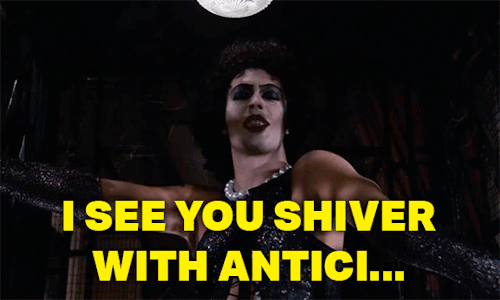
But then, Jonah says “The little son of a bitch had a crystal of ice-nine in a thermos in his luggage” (111). Oh yeah, nothing is actually resolved because world ending ice-nine substance Jonah also warned us about is still out in the world, which Jonah on the plane doesn’t know about, and the karass hasn’t actually done anything they are suppose to. So in a sentence the reader gone from that fleeting sense of resolution back to anticipation. The qualitative progressive form created by the repeated idea of the karass takes the reader through the spectrum of anticipation and resolution. But there is another spectrum created of being given answers and then asking questions. For example, Jonah gives us an answer in the previous quote, “The little son of a bitch had a crystal of ice-nine in a thermos in his luggage.” Repeatedly Jonah tells the reader that the Hoenikker children have ice-nine. The answer to the mystery of where is Dr. Hoenikker deadliest weapon is already given to us, but because the answer leads the reader to ask more questions. What are the Hoenikkers going to do with it? How will Jonah discover they have it? Will someone release it upon the world? The qualitative progressive form is taking the reader along the spectrum that the genre of satire wants the reader to take–to question. Satire wants to make us think, often about issues that we do not wish to. By giving the reader some of the answers, the qualitative progressive form in Cat’s Cradle is preparing the reader to ask the questions they might not have wanted to ask.
While the narrator is searching for his own truth, so is the reader. In this way, the narrator is almost meant to be a stand-in for the average reader, or target demographic for which the form is directed at. Not only does this make the narrator immediately relatable in an emotional sense for the reader, but it also means that the reader is inherently thrown into the struggle between the opposing controlling values along with the narrator. Considering the discussed intention of satire, to introduce potentially unsuspecting readers to potentially uncomfortable ideas or situations in the hopes of inciting some sort of cultural change or recognition of an issue, this means that the form serves to accomplish the goal of the genre and specific novel very well.
By Jordan
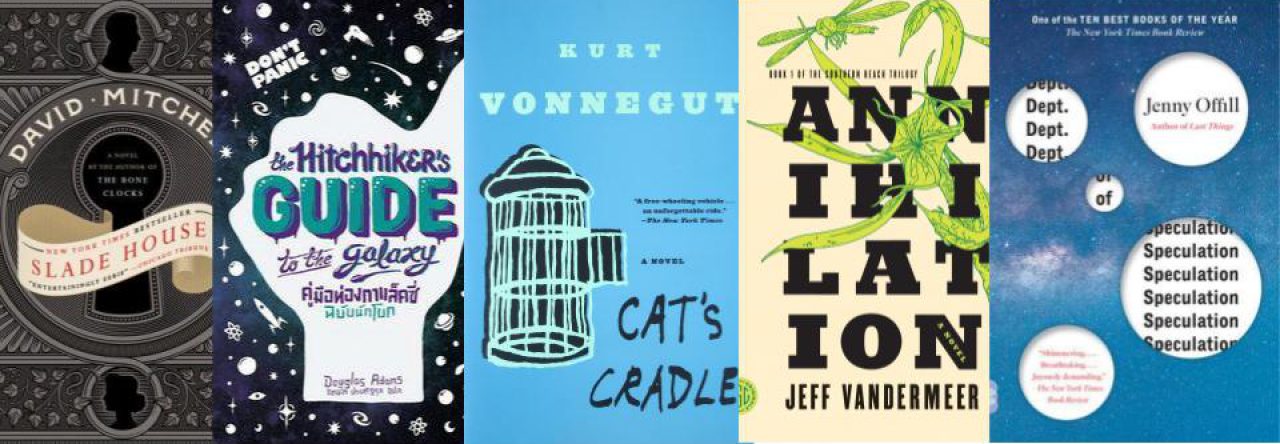
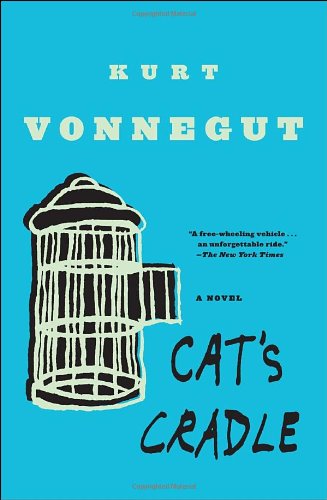

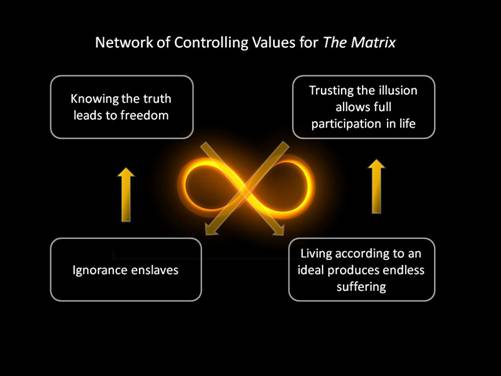

 An agreement is struck every time I pick up a book. I am saying that I will try to read the text as it was meant to be read, and if I fail in this agreement I won’t enjoy the text as much as I could. This is me accepting my readerly role. I made this agreement when I picked up
An agreement is struck every time I pick up a book. I am saying that I will try to read the text as it was meant to be read, and if I fail in this agreement I won’t enjoy the text as much as I could. This is me accepting my readerly role. I made this agreement when I picked up 
 But what sort of values would this reading imply the reader adopt? Would it be the values my group and I found, or a different set? As Seitz pointed out, “rather, we ‘try on’ readings, envision the text through the eyes of various masks, all the while attempting to forecast what it proposes, ‘what it all adds up to’” (152). In other words, with this mask of old hitchhiker and guide researcher, the reader would want to know what it all means by reading with this frame, and would it end with a fulfilling culmination of events or the number 42? To this addressee, it wouldn’t matter. All they would want would be more information for the guide, the more outrageous and colorful the better.
But what sort of values would this reading imply the reader adopt? Would it be the values my group and I found, or a different set? As Seitz pointed out, “rather, we ‘try on’ readings, envision the text through the eyes of various masks, all the while attempting to forecast what it proposes, ‘what it all adds up to’” (152). In other words, with this mask of old hitchhiker and guide researcher, the reader would want to know what it all means by reading with this frame, and would it end with a fulfilling culmination of events or the number 42? To this addressee, it wouldn’t matter. All they would want would be more information for the guide, the more outrageous and colorful the better. I suspect that the narrator is a newer,
I suspect that the narrator is a newer,  So what does this mean for us, the fabled reader of the narrator addressing the addressee? The improbability of the whole story is what seems to win out in the end, and Arthur is left, homeless and adrift, but never alone. I think that we are like Arthur, swept up on this wacky, nonsensical journey. We can give ourselves over to the zany events because it is so far removed from daily life. No government official would lie in the mud in the place of someone else just because he’s already committed to waiting around all day, no one would seriously take poetry as a form of punishment (it would be a discomfort at most), and no one would really believe that mice are the
So what does this mean for us, the fabled reader of the narrator addressing the addressee? The improbability of the whole story is what seems to win out in the end, and Arthur is left, homeless and adrift, but never alone. I think that we are like Arthur, swept up on this wacky, nonsensical journey. We can give ourselves over to the zany events because it is so far removed from daily life. No government official would lie in the mud in the place of someone else just because he’s already committed to waiting around all day, no one would seriously take poetry as a form of punishment (it would be a discomfort at most), and no one would really believe that mice are the 
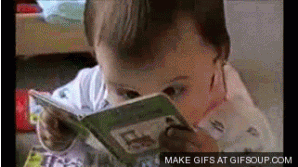









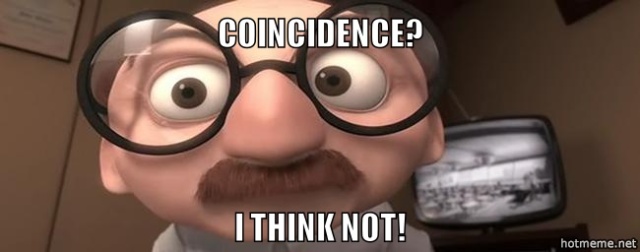


 Arthur Dent’s morning is just like any other or so he thinks. His life takes a strange turn when he learns that his house will be demolished for a new bypass, his best friend is an alien, oh.. And did I mention? All he ever loved including his planet Earth will be destroyed. Within hours he finds himself stowed away on a Vogon’s spaceship. To make matters worse the Vogons are, according to the hitchhikers guide, the most unpleasant race in the Galaxy. With any hopes of survival he will need to stick close to his alien friend Ford Prefect and The Hitchhikers guide to the galaxy to survive this changing world.
Arthur Dent’s morning is just like any other or so he thinks. His life takes a strange turn when he learns that his house will be demolished for a new bypass, his best friend is an alien, oh.. And did I mention? All he ever loved including his planet Earth will be destroyed. Within hours he finds himself stowed away on a Vogon’s spaceship. To make matters worse the Vogons are, according to the hitchhikers guide, the most unpleasant race in the Galaxy. With any hopes of survival he will need to stick close to his alien friend Ford Prefect and The Hitchhikers guide to the galaxy to survive this changing world.


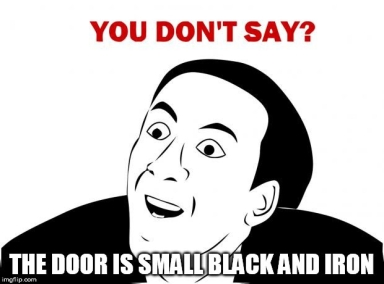

 During her second time reading Slade House, Brittany noticed images that were repeated numerous time. Each chapter someone is lured into Slade House. For example, Nathan’s mother goes because she hopes it would help her music career and Detective Inspector Gordon Edmonds is lured by Norah disguised as an attractive woman in need of help. Brittany also noticed that each time, the victims passed through “a small black iron door, set into the brick wall” (9) that leads into a beautiful garden. Also while in Slade House, every victim eats a special substance, which the Grayer twins call banjax. And finally, each victim, with the exception of the last, gets their soul devoured. When examining the basic structure of each chapter and the motifs within, Brittany realized that you could draw multiple parallels to the biblical Garden of Eden story. Both stories feature humans tempted with something they desire by a sinister trickster(s) figure (It wouldn’t be far stretch to call the Grayer Twins snakes) while in a grand garden. They partake in a food offered by the trickster(s), whether it be an apple of a cup of coffee, and lose their immortal soul. Adam and Eve lost their place in Heaven and the victims of Slade House have their souls devoured by the Grayer twins. Alex also picked up on a biblical reference. Jonah Grayer shares his name with the prophet who was eaten by a whale. While Jonah is the one doing the eating, instead of being eaten, Alex found out through some research that due to the biblical story, sailors traditionally use the name “Jonah” to personify someone who brings bad luck. The Jonah from Slade House brings bad luck to Nathan and the other victims. After closely reading the characters interactions with the garden and the Grayer twins, Brittany revised her controlling ideas of Slade House. Viewed through this lens, the book is about giving into temptations and the effect it has on your soul, or sense of self. As discussed in Blog 1, Nathan does die because he distrusts himself.
During her second time reading Slade House, Brittany noticed images that were repeated numerous time. Each chapter someone is lured into Slade House. For example, Nathan’s mother goes because she hopes it would help her music career and Detective Inspector Gordon Edmonds is lured by Norah disguised as an attractive woman in need of help. Brittany also noticed that each time, the victims passed through “a small black iron door, set into the brick wall” (9) that leads into a beautiful garden. Also while in Slade House, every victim eats a special substance, which the Grayer twins call banjax. And finally, each victim, with the exception of the last, gets their soul devoured. When examining the basic structure of each chapter and the motifs within, Brittany realized that you could draw multiple parallels to the biblical Garden of Eden story. Both stories feature humans tempted with something they desire by a sinister trickster(s) figure (It wouldn’t be far stretch to call the Grayer Twins snakes) while in a grand garden. They partake in a food offered by the trickster(s), whether it be an apple of a cup of coffee, and lose their immortal soul. Adam and Eve lost their place in Heaven and the victims of Slade House have their souls devoured by the Grayer twins. Alex also picked up on a biblical reference. Jonah Grayer shares his name with the prophet who was eaten by a whale. While Jonah is the one doing the eating, instead of being eaten, Alex found out through some research that due to the biblical story, sailors traditionally use the name “Jonah” to personify someone who brings bad luck. The Jonah from Slade House brings bad luck to Nathan and the other victims. After closely reading the characters interactions with the garden and the Grayer twins, Brittany revised her controlling ideas of Slade House. Viewed through this lens, the book is about giving into temptations and the effect it has on your soul, or sense of self. As discussed in Blog 1, Nathan does die because he distrusts himself. Speaking of Nathan, Alex decided to dig into the seemingly hapless narrator of the first chapter. One reference that really stuck with him was about Asterix, a popular French comic. Nathan mentions, “For me, Valium’s like Asterix’s magic potion, but it makes Mum dopey” (8). In the Asterix stories, Asterix’s village hasn’t been conquered by Julius Caesar thanks to a secret magic potion created by the village’s wise old druid (known as Getafix in English), which gives whoever drinks it temporary superhuman strength, agility, and senses (almost like a super powerful adrenaline shot). Nathan mentions the comic series because it was very popular in Europe in the ’70s and ’80s, and Valium is his magic potion, giving him a sense of high in which he can accomplish his best. The first time Alex, and the rest of us, read the chapter we doubted Nathan’s experiences because he was on Valium. Like Nathan, we assumed that he was hallucinating rather than actually experiencing the garden dissolving or Jonah turning into a Mastiff. But if we look at it with the perspective that Nathan is like Asterix, than Nathan’s perception of events (or at least perception of the Grayer’s Orison) was more accurate than a normal person’s. That would explain why Nathan saw so many more warning signs than the second victim Gordon Edmonds. Prephaps if we had trusted in our narrator more the first time, we would have seen the Grayer twin’s plan earlier.
Speaking of Nathan, Alex decided to dig into the seemingly hapless narrator of the first chapter. One reference that really stuck with him was about Asterix, a popular French comic. Nathan mentions, “For me, Valium’s like Asterix’s magic potion, but it makes Mum dopey” (8). In the Asterix stories, Asterix’s village hasn’t been conquered by Julius Caesar thanks to a secret magic potion created by the village’s wise old druid (known as Getafix in English), which gives whoever drinks it temporary superhuman strength, agility, and senses (almost like a super powerful adrenaline shot). Nathan mentions the comic series because it was very popular in Europe in the ’70s and ’80s, and Valium is his magic potion, giving him a sense of high in which he can accomplish his best. The first time Alex, and the rest of us, read the chapter we doubted Nathan’s experiences because he was on Valium. Like Nathan, we assumed that he was hallucinating rather than actually experiencing the garden dissolving or Jonah turning into a Mastiff. But if we look at it with the perspective that Nathan is like Asterix, than Nathan’s perception of events (or at least perception of the Grayer’s Orison) was more accurate than a normal person’s. That would explain why Nathan saw so many more warning signs than the second victim Gordon Edmonds. Prephaps if we had trusted in our narrator more the first time, we would have seen the Grayer twin’s plan earlier. In an attempt to close read, Nicole decided to also look at what Nathan notices. Nathan notices that “Seven Magpies fly by. Seven’s good” (3). The Magpie is a clever bird that constructs the best nests and is one of the only mammals that can recognize themselves in a mirror (Wikipedia.com). Norah and Jonah can be likened to the magpie in their detailed construction of their illusions for their victims as well as the use of the mirrors, which the victims see themselves in. As the English Fairy tale about magpies explains, the magpie tries to teach the other birds how to build nests but none stay till the end, and at which point the magpie is fed up and refuses to teach anymore (surlalunefairytales.com). To Nicole this shows a sense of pride in the creation of the nest, and the illusion, which may lead to too much pride. Which is a downfall for Norah and Jonah later on. Furthermore, Nathan sees the seven magpies and decides that it is a good sign, which ultimately isn’t so for him. In most cultures the number seven is a lucky, pleasing mathematical iteration. There are seven days of the week, seven continents, seven seas, seven wonders of the world, and don’t forget the winning lucky sevens in every casino. But it isn’t so in all cultures. In Chinese culture the number signifies not just bad luck, but death (psychiclibrary.com). Which in Nathan’s case ends up making the most sense.
In an attempt to close read, Nicole decided to also look at what Nathan notices. Nathan notices that “Seven Magpies fly by. Seven’s good” (3). The Magpie is a clever bird that constructs the best nests and is one of the only mammals that can recognize themselves in a mirror (Wikipedia.com). Norah and Jonah can be likened to the magpie in their detailed construction of their illusions for their victims as well as the use of the mirrors, which the victims see themselves in. As the English Fairy tale about magpies explains, the magpie tries to teach the other birds how to build nests but none stay till the end, and at which point the magpie is fed up and refuses to teach anymore (surlalunefairytales.com). To Nicole this shows a sense of pride in the creation of the nest, and the illusion, which may lead to too much pride. Which is a downfall for Norah and Jonah later on. Furthermore, Nathan sees the seven magpies and decides that it is a good sign, which ultimately isn’t so for him. In most cultures the number seven is a lucky, pleasing mathematical iteration. There are seven days of the week, seven continents, seven seas, seven wonders of the world, and don’t forget the winning lucky sevens in every casino. But it isn’t so in all cultures. In Chinese culture the number signifies not just bad luck, but death (psychiclibrary.com). Which in Nathan’s case ends up making the most sense. Something everyone noticed was the repeated mentions of The Fox and Hounds tavern that every victim sees when they try to find Slade House. Brittany researched the name and found a game by the name where the objective is for the fox piece to cross to the other side of a chest board without being stopped by the hound pieces, which parallels the Slade House victims trying to escape the Grayer Twins. Nicole noticed that Nathan says, “She’s wearing her dark blue concert outfit and her hair up with the silver fox-head hairpin”(4) which she had originally forgotten that the hairpin came from his mother. The fox hairpin is one of the things that lead to the ultimate demise of the Grayer twins. It is a symbol of cunning, cleverness, and adaptability (whats-your-sign.com). With this aiding in the the downfall of the Norah and Jonah, the symbol is well used. The mention of, “[A] pub called The Fox and Hounds” (3) implies that the fox is cornered (like in the game) and will not survive. But the use of the fox hairpin proves that the foxes strategy and cleverness wins out over brutality.
Something everyone noticed was the repeated mentions of The Fox and Hounds tavern that every victim sees when they try to find Slade House. Brittany researched the name and found a game by the name where the objective is for the fox piece to cross to the other side of a chest board without being stopped by the hound pieces, which parallels the Slade House victims trying to escape the Grayer Twins. Nicole noticed that Nathan says, “She’s wearing her dark blue concert outfit and her hair up with the silver fox-head hairpin”(4) which she had originally forgotten that the hairpin came from his mother. The fox hairpin is one of the things that lead to the ultimate demise of the Grayer twins. It is a symbol of cunning, cleverness, and adaptability (whats-your-sign.com). With this aiding in the the downfall of the Norah and Jonah, the symbol is well used. The mention of, “[A] pub called The Fox and Hounds” (3) implies that the fox is cornered (like in the game) and will not survive. But the use of the fox hairpin proves that the foxes strategy and cleverness wins out over brutality. Our reading group’s first book is the novel Slade House by David Mitchell. The first chapter of Slade House is focused on a young boy named Nathan and his mother heading to meet a Lady Grayer at her house, Slade House, which is off of Slade Alley. After a bit of trouble finding the location, they finally arrive through the black iron door into Slade House’s garden where they are introduced to Lady Grayer and her son Jonah. Lady Grayer, who goes by Norah, takes Nathan’s mother inside to meet with a well-known musician. Nathan stays in the house’s garden to play with Jonah.
Our reading group’s first book is the novel Slade House by David Mitchell. The first chapter of Slade House is focused on a young boy named Nathan and his mother heading to meet a Lady Grayer at her house, Slade House, which is off of Slade Alley. After a bit of trouble finding the location, they finally arrive through the black iron door into Slade House’s garden where they are introduced to Lady Grayer and her son Jonah. Lady Grayer, who goes by Norah, takes Nathan’s mother inside to meet with a well-known musician. Nathan stays in the house’s garden to play with Jonah. We were also trying to discern the controlling idea and counter idea, terms for opposing themes defined by Robert McKee in “Structure and Meaning.” Certain things stuck out to as the narrator, Nathan, tells the story. Nathan’s mind tends to wander, which is reflected in his stream of consciousness narration. His mother is scolding him, but he focuses on her lipstick color or the story of how she got her hairpin. Nathan’s mother instructs him to improve his skills in “Blend In more” (5) and “Acting Normal” (6). Nathan is in a constant struggle between how he wishes to act and how those around him expect him to act, as exemplified by his fascination with a dead cat in Slade Alley. When Nathan points out the dead cat and tries to express how much it upset him, he is shut down by his mother. She wants him to think as she does and forget about it, and he does for a moment. In this small exchange, the ways of others (the way of ignoring dead cats) prevails and Nathan submits to that way of thinking.
We were also trying to discern the controlling idea and counter idea, terms for opposing themes defined by Robert McKee in “Structure and Meaning.” Certain things stuck out to as the narrator, Nathan, tells the story. Nathan’s mind tends to wander, which is reflected in his stream of consciousness narration. His mother is scolding him, but he focuses on her lipstick color or the story of how she got her hairpin. Nathan’s mother instructs him to improve his skills in “Blend In more” (5) and “Acting Normal” (6). Nathan is in a constant struggle between how he wishes to act and how those around him expect him to act, as exemplified by his fascination with a dead cat in Slade Alley. When Nathan points out the dead cat and tries to express how much it upset him, he is shut down by his mother. She wants him to think as she does and forget about it, and he does for a moment. In this small exchange, the ways of others (the way of ignoring dead cats) prevails and Nathan submits to that way of thinking.